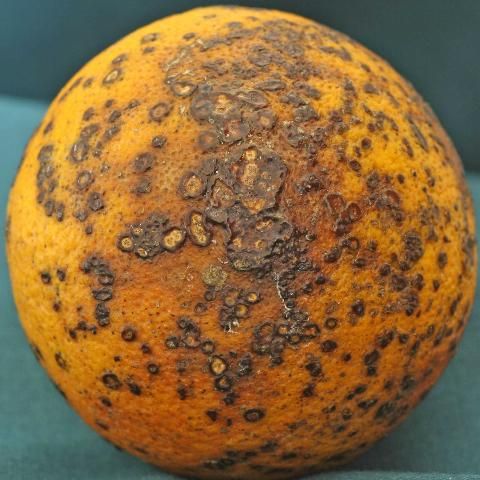
Credit: UF/IFAS
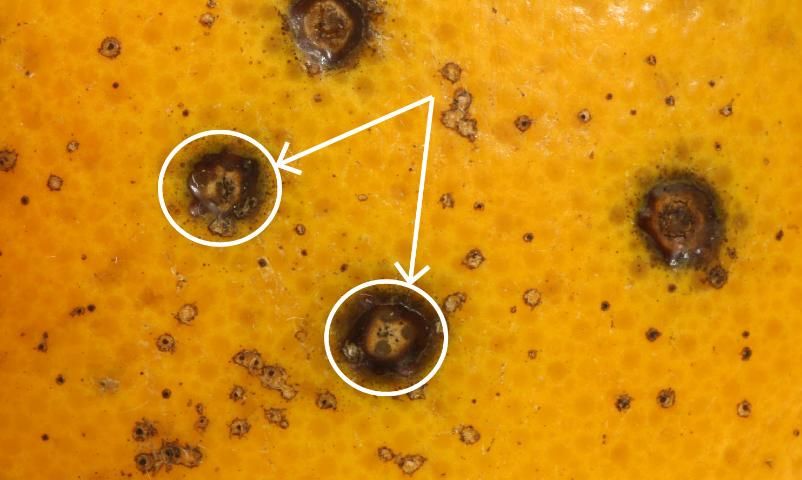
Credit: UF/IFAS
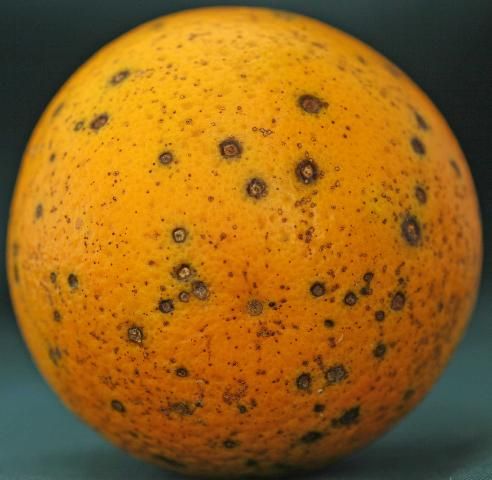
Credit: UF/IFAS
Fungal Disease
Caused by Phyllosticta citricarpa
Minor Inoculum Source
Conidia (asexual spores) from pycnidia that form on fruit, dead twigs, and leaf litter. The conidia are rain-splash dispersed. The conidia are a particular problem on cultivars that have young and mature fruit on the tree simultaneously but can be present and infect any cultivar. The airborne ascospores are not present in Florida. This spore type may become a problem in the future and lead to greater spread of the disease.
Cultivar Suscetibility
All commercial cultivars are susceptible, but late-maturing cultivars and lemons are most vulnerable.
Leaf Symptoms
Rare in well-managed groves; most common on lemons. Older lesions are small, round, and sunken with a gray center, dark brown margin, and yellow halo. Younger lesions have reddish brown margins with light centers and a diffuse yellow halo.
Fruit Symptoms
Variable. Four main types:
Hard spot (most common and diagnostic)
Small, round, sunken lesions with gray centers with brick red to black margins. Fungal structures appear as slightly elevated black dots. Appears as fruit begins to color where light exposure is highest.
False melanose
Numerous small, slightly raised lesions that can be tan to brown. Occurs on green and mature fruit and does not have pycnidia. May become hard spot later in the season.
Cracked spot
Large, flat, dark brown lesions with raised cracks in their surface. Thought to be caused by an interaction with rust mite. Can become hard spot later in the season. Occurs on green and mature fruit.
Early virulent spot (freckle spot)
Small, reddish, irregularly shaped lesions. Occurs on mature fruit as well as postharvest in storage. Can develop into either virulent spot or hard spot. Virulent spot is caused by the expansion and/or fusion of other lesions covering most of the fruit surface toward the end of the season.
SEVERELY AFFECTED FRUIT CAN DROP BEFORE HARVEST, CAUSING SIGNIFICANT YIELD LOSS.
Other Black Spot Symptoms
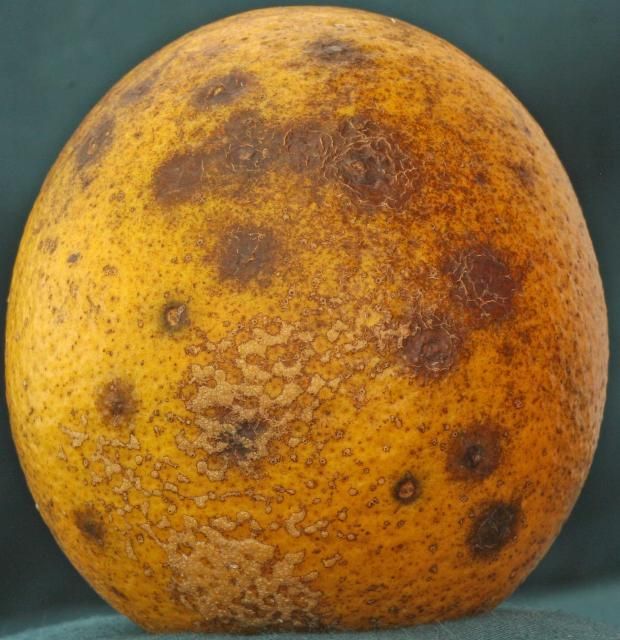
Credit: UF/IFAS
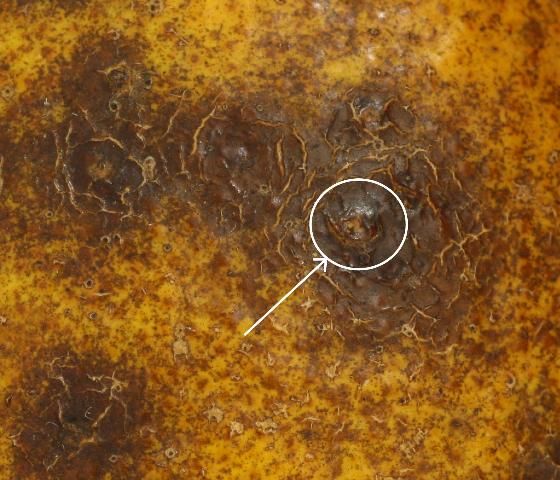
Credit: UF/IFAS

Credit: UF/IFAS
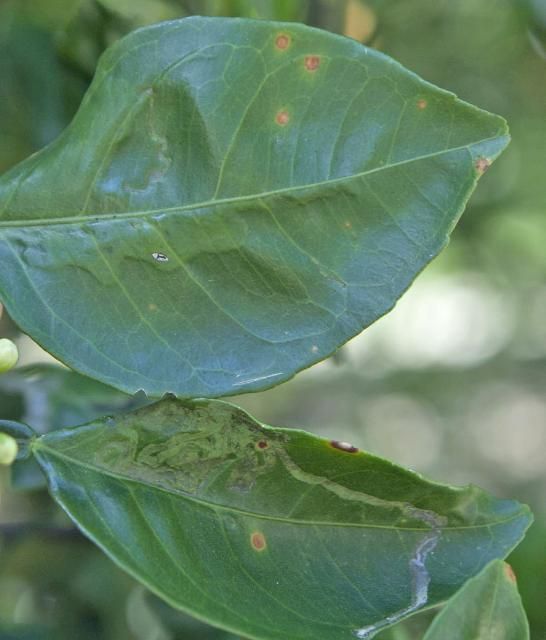
Credit: UF/IFAS
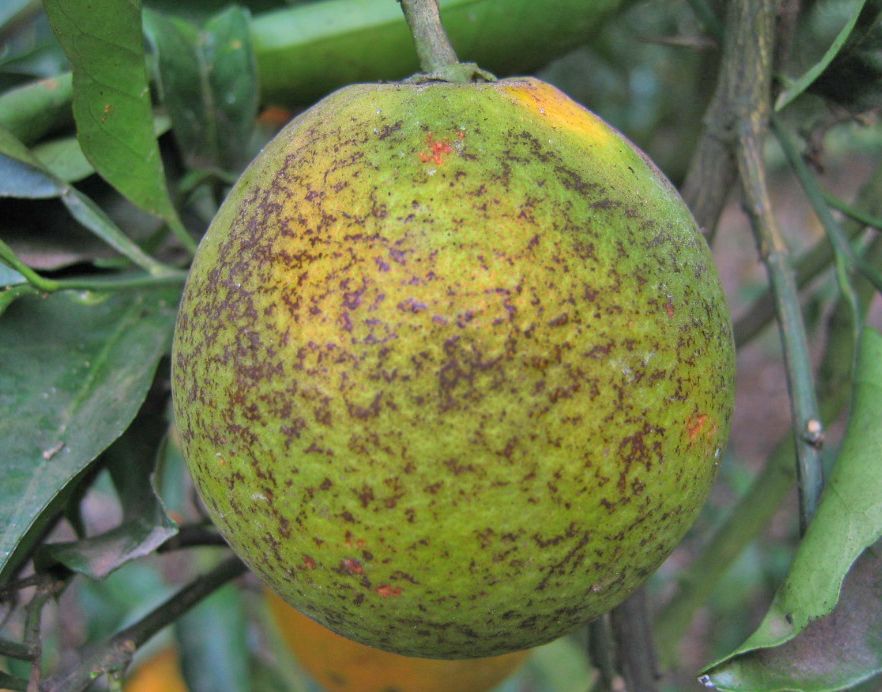
Credit: UF/IFAS
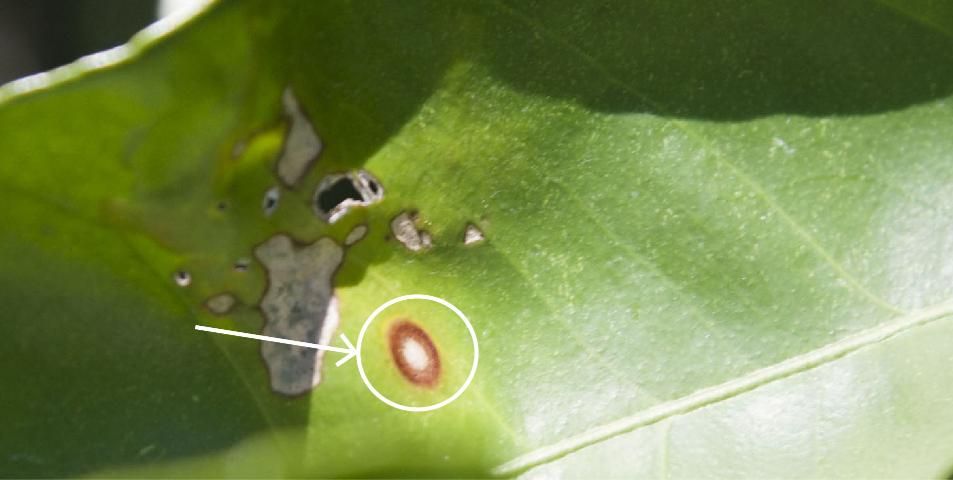
Credit: UF/IFAS

Credit: UF/IFAS